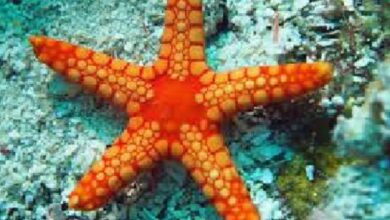What is Ecoregion characteristics and types
Ecoregion
In short, an ecoregion is a large unit of land or water that contains a geographically distinctive set of species, natural communities, and environmental conditions. Although the boundaries of the world’s ecoregions are not fixed, they all share the same characteristic: they all encompass an area within which ecological and evolutionary processes interact with each other.
That being said, there is often some confusion in differentiating an ecoregion from a biome. But they are not the same. Biomes are a biotic community that has physiognomic uniformity in its vegetation as a result of its climatic conditions and the characteristics of the soil of a particular territory. On the other hand, an ecoregion is a biogeographic area that brings together a characteristic fauna, flora and ecology that make it unique. Ecoregions are, therefore, places with a unique biodiversity scheme.
Types of Ecoregion
three large groups
The ecoregions can be terrestrial, freshwater and marine and, together, add up to a total of 26. To establish each one of them, a series of regional analyzes of the biodiversity of all the continents and oceans of the world is carried out. . Likewise, all of them must meet a series of requirements that we will see as well.
An ecoregion is ultimately an outstanding example of each terrestrial, freshwater, and marine habitat type. The 26 main types describe different areas of the world that share similar environmental conditions, habitat structures, and patterns of biological complexity. Furthermore, they must contain similar adaptations for all their communities of species.
To represent the unique biodiversity of continents and oceans, each major habitat type is subdivided into 7 biogeographic realms:
- afrotropical
- australasia
- Indo-Malayan
- nearctic
- neotropical
- Oceania
- palearctic
Within these biogeographic realms, ecoregions that represent the most distinctive examples of biodiversity for each habitat type are identified. But biodiversity is not the only element that makes these regions unique. In fact, the ecoregions we are talking about give rise to some of the most beautiful natural landscapes on the planet.
Ecoregion characteristics
In summary, to delimit what an ecoregion is, the following parameters are followed:
- The richness of species that a particular habitat contains.
- Second, we have to talk about endemism. We know as endemism the distribution of a species is established by a certain reduced geographical area. In addition, endemism requires that such a species does not occur naturally anywhere in the world. Therefore, when a species is identified as endemic to a region, it is only possible to find it naturally in that particular place.
- The greater or lesser taxonomic unit (classification of living beings according to their morphological and functional characteristics and their evolutionary line) of the different species that make up a particular ecoregion.
- The extraordinary ecological or evolutionary phenomena that occur in this area cannot be located anywhere else.
If the four previous parameters are met in a habitat, it has a singularity with respect to others. This makes it a unique ecoregion; although it may be the case that some share some common element. However, ecoregions with shared features would still be considered separate ecoregions.
The 26 ecoregions of the world
Finally, we will see how the 26 ecoregions of the world are divided, according to the World Conservation Forum:
terrestrial
- Deserts and xerophytic scrublands
- Temperate broadleaf and mixed forests
- Temperate Coniferous Forest
- Boreal forests / Taiga
- Tropical and subtropical dry broadleaf forests
- Tropical and subtropical grasslands, savannahs, and shrublands
- Temperate grasslands, savannahs, and shrublands
- Flooded grasslands and savannahs
- Tropical and subtropical moist broadleaf forests
- Montane grasslands and shrublands
- Tropical and subtropical coniferous forests
- Tundra
- Mediterranean forests, forests and scrub
- mangroves
freshwater
- Large river ecosystems
- Large river delta ecosystems
- Small river ecosystems
- Large river headwater ecosystems
- Large lake ecosystems
- Small lake ecosystems
- Xeric Basin Ecosystems
marine
- polar ecoregions
- Temperate seasons and marine ecoregions
- temperate upwelling
- Tropical Populations
- tropical coral
